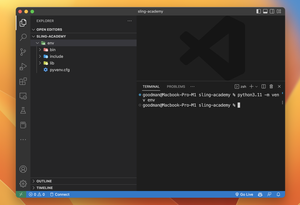Introduction
Asynchronous programming in Python has gained significant popularity and practical application, especially for developing I/O bound applications. The asyncio library in Python provides the tools for writing concurrent code using the async/await syntax. Among its features, managing tasks is a core functionality that allows for concurrent execution of coroutines. In this guide, we’ll delve deep into a specific aspect of task management in asyncio: setting names for tasks and retrieving them later.
Why name a task? Naming tasks can be extremely useful for debugging and monitoring purposes. It can simplify tracking the task’s execution state and improve the readability of logs. Let’s explore how to effectively name and manage asyncio tasks.
Getting Started with Asyncio
Before we dive into naming tasks, let’s quickly review how to create and run asyncio tasks.
import asyncio
async def my_coroutine():
print("Hello from the coroutine")
async def main():
task = asyncio.create_task(my_coroutine())
await task
asyncio.run(main())
In the above example, we define a simple coroutine my_coroutine and then create a task out of it using asyncio.create_task(). The main function runs the task.
Naming a Task
Let’s introduce how to assign a name to a task. This can be achieved by utilizing the name keyword argument available in asyncio.create_task().
import asyncio
async def my_named_coroutine():
print("Task with a specific name")
async def main():
named_task = asyncio.create_task(my_named_coroutine(), name="TaskExample")
await named_task
# Output the task name
print(named_task.get_name())
asyncio.run(main())
In this scenario, we have created a task named “TaskExample.” Using the task.get_name() method, we can output the name of the task after its execution. This feature aids in identifying tasks, especially when working with multiple concurrent tasks.
Finding a Task by Name
Finding a task by its name requires a more manual approach since asyncio does not provide a built-in method specifically for this purpose. However, we can utilize the asyncio.all_tasks() method to iterate over all running tasks and filter by name.
import asyncio
async def find_task_by_name(task_name):
for task in asyncio.all_tasks():
if task.get_name() == task_name:
return task
return None
async def main():
task1 = asyncio.create_task(asyncio.sleep(1), name="A")
task2 = asyncio.create_task(asyncio.sleep(1), name="B")
task_to_find = await find_task_by_name("A")
if task_to_find:
print(f"Found task by name: {task_to_find.get_name()}")
else:
print("Task not found.")
asyncio.run(main())
In this example, we have two tasks named “A” and “B”. The function find_task_by_name searches for a task with a specific name among all running tasks and returns it if found. This allows for dynamic interaction with specific tasks in more complex asynchronous applications.
Advantages of Naming Tasks
Naming tasks in asyncio holds several advantages:
- Improved Debugging: Easily identify tasks in logs and debug outputs, making it easier to trace problems.
- Better Monitoring: Monitor the state and performance of individual tasks, particularly useful in production environments.
- Enhanced Control: Manage tasks more effectively by referencing them by name.
Use Cases
Here are a few practical use cases of naming tasks:
- Monitoring Task Execution: Assign descriptive names to tasks based on their roles (e.g., “database-update”, “data-fetching”) to easily monitor their execution and identify bottlenecks.
- Debugging in Complex Applications: In applications where numerous tasks run concurrently, naming tasks simplifies identifying and debugging specific tasks.
- Distributed Systems: When managing tasks across distributed systems, naming can help keep track of which component created a task and its purpose.
Conclusion
In conclusion, naming asyncio tasks offers significant advantages for debugging, monitoring, and controlling asynchronous programs in Python. By utilizing the simple technique of setting and retrieving task names, developers can greatly improve the maintainability and readability of their asynchronous applications. This tutorial has covered the basics of naming tasks and finding them by name. These capabilities, while straightforward to implement, can have profound effects on the efficiency and clarity of your async program.











